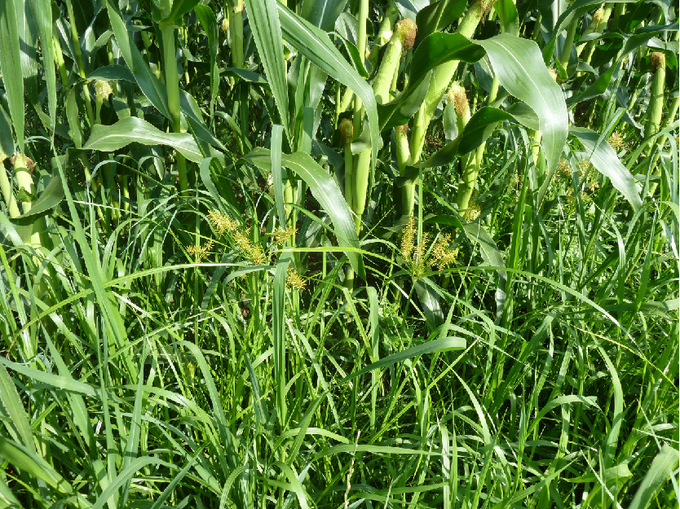Yellow nutsedge
Cyperus esculentus
Appearance
The tiger grass has a characteristic triangular stem. The leaves are shiny light green and clearly v-shaped in cross-section. The plant is entirely hairless.
The underground stolons are thin (1 to 2 mm in diameter), soft and whitish-brown. The plant forms tubers ("tigernuts") about 1-2 cm in size as survival organs. These are first white-reddish and later turn gray-brown with transverse stripes.
The inflorescence consists of up to 10 branches, at the ends of which are numerous, yellowish to brownish spikelets.
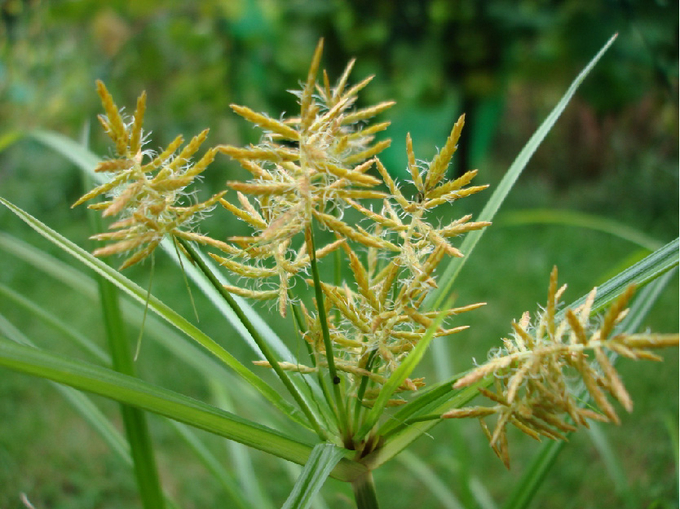
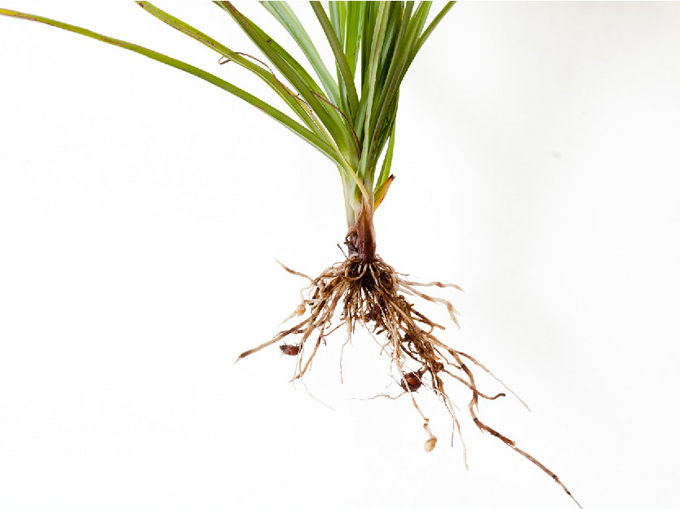
Possibilities of confusion
There are two other acid grasses that occur locally on agricultural lands that also cause problems and can be confused with tiger grass. They are hairy sedge(Carex hirta) and bulbous rush(Bolboschoenus spp.).
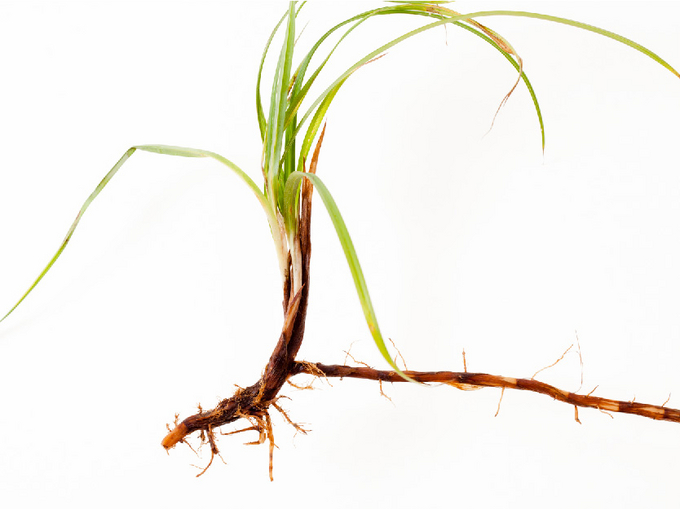
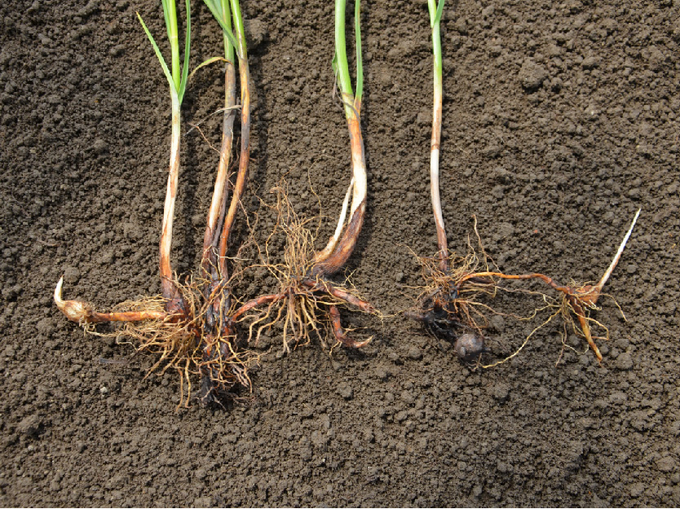
Distribution
The main occurrences of tiger grass are in the warmer lowland areas of Styria and Carinthia: in the districts of Leibnitz (including the municipalities of Sankt Johann im Saggautal, Gralla), Voitsberg (Sankt Johann-Köppling) and southeastern Styria (Murfeld, Mettersdorf am Saßbach) as well as in the Klagenfurt Basin. Isolated occurrences (in some cases large populations) are also found in Upper Austria and Lower Austria. Findings of tiger nutsedge have also been reported from Tyrol (Inn Valley).
The species was first observed in 1987 near Grafenstein/Thon in Carinthia. It has most likely been introduced from Italy with construction machinery. In Styria, the species was described in 1998 in St. Johann im Saggautal and in St. Johann ob Hohenburg. For these two sites the route of introduction is not known.
After successful establishment of these populations, tiger grass has spread radially around these sites in recent years. In total, more than 100 finds of tiger nutsedge have been recorded to date.
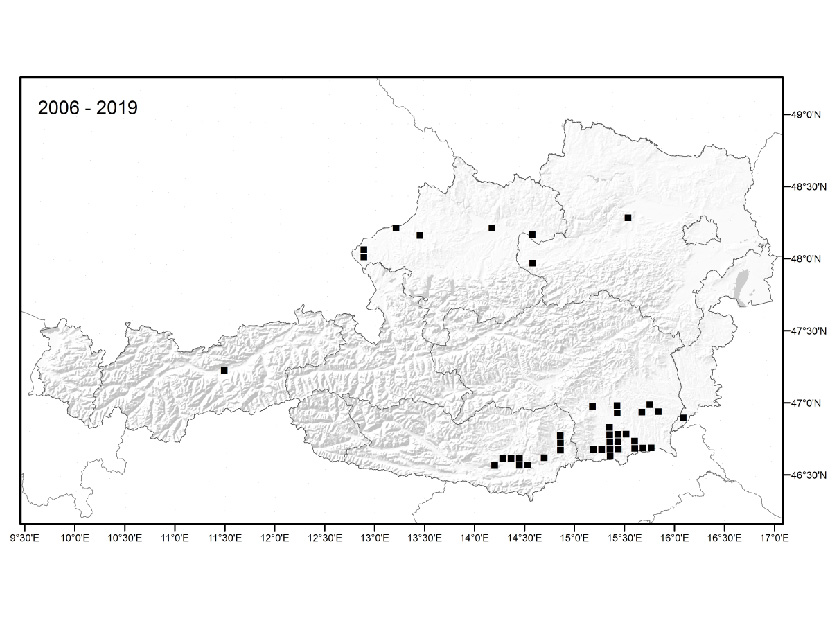
Spread
The success of tiger grass is based on very effective vegetative propagation. The tubers sprout in late spring and form numerous daughter plants during the summer via underground runners. Towards the end of the growing season, the tips are differentiated into tubers. Hundreds of tubers can develop from a single plant over the course of a growing season.
Carryover of tubers occurs via soil, crop residues and planting material from already colonized areas. Longer distances are also bridged here. Of great importance is therefore the carry-over of soil material by machines and equipment from field to field. In Central Europe, tiger grass reproduces mainly vegetatively. Seeds are formed, but no seedlings have yet been observed.
Prevention and control
Sustained control in agriculture is very difficult and extends over several years with the prospect that tigerweed has not completely disappeared from the field. The primary goal is therefore to keep infestations on cropland at very low levels. This will require significant additional effort and intensification of measures. The following measures can be considered:
- Cleaning of machinery and equipment that have been used on infested fields is essential to prevent carryover and thus the establishment of satellite populations.
- Early detection is very important to prevent tiger grass from spreading over large areas.
- Corn, as a competitive crop, is generally best suited in a crop rotation to suppress tigerweed. If possible, corn should be planted relatively late (starting May 20 or even later - early June). Prior to seeding, the soil can then be repeatedly tilled mechanically (e.g., with a harrow) to destroy (emergent) tigerweed. This is followed by a sequential herbicide application: Dimethenamid-P or S-metolachlor. A pre-seeding incorporation of these active ingredients is most effective (however, there is currently no approval for this application in Austria!-see list of plant protection products approved in Austria). Then, for example, a combination of mesotrione + pyridate (2x) can be applied.
- In soybeans, the sowing date can also be shifted back a little to integrate multiple tillage before sowing.
- Cereals basically have a high competitive power and make it difficult for tiger grass to develop. After harvest, stubble cultivation in combination with a crop protection product is essential. In patchy stands (also tramlines!), however, tigerweed can grow and also form nodules.
Use
There is also an edible cultivated form of tiger grass ("chufa"), which bears the scientific name Cyperus esculentus var. sativus. This has been selected by man for conventional cultivation and is morphologically very similar to the weed tiger nut grass. However, it differs in having much larger and sweeter tubers and does not exhibit invasive behavior.
Specialized information
Publications
Follak, S., Schwarz M., 2020. tiger grass - An analysis of spatio-temporal dispersal. The Plant Physician, 73(11-12), 18-19.
Follak, S., Belz, R., Bohren, C., De Castro, O., Del Guacchio, E., Pascual-Seva, N., Schwarz, M., Verloove, F., Essl, F., 2016. Biological flora of Central Europe: Cyperus esculentus L. Perspectives in Plant Ecology, Evolution and Systematics, 23, 33-51.
Last updated: 05.09.2023
automatically translated
